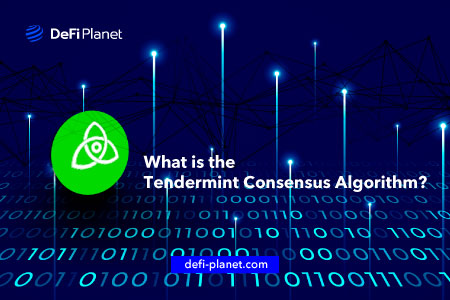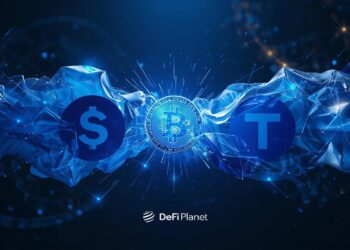Blockchain developers usually spend a significant amount of time working on the engine that their platforms are built on and the application layer when developing decentralized apps. Some developers prefer to employ existing blockchain protocol engines to build their decentralized apps, allowing them to focus solely on developing their decentralized apps.
Developers who choose the latter option build smart contracts launched on the selected blockchain protocol. Some may use Ethereum, while others employ open-source blockchain protocol engines such as Tendermint.
This article comprehensively examines the Tendermint consensus mechanism, taking a close look at its features and architecture.
The Tendermint Origin Story
Tendermint was founded by Jae Kwon, a developer who wrote the whitepaper that outlined the platform’s architecture.
Tendermint did not start as an open-source blockchain protocol as it is now. Initially, it was designed to compete with Bitcoin by providing a superior consensus mechanism than what was available in earlier blockchains such as Bitcoin. It used the Proof-of-Stake consensus mechanism and had only one currency.
After a while, the evolution began. Tendermint is now regarded as a blockchain consensus engine and is used to build blockchains in several languages. Its versatility has made it popular among developers, who can employ programming languages such as Solidity, Haskell, and Rust.
What is the Tendermint Protocol?
Tendermint is an open-source blockchain protocol engine that allows developers to improve its functionality while allowing teams to create decentralized apps using any programming language.
ABCI and Tendermint Core are the two main components of the Tendermint Protocol. Tendermint makes it easier to replicate an app across multiple machines safely. This is made possible through the Byzantine Fault Tolerance (BFT).
Because the architecture is robust, it can continue functioning successfully even when up to one-third of the machines are having issues. As a result of ABCI, developers can create decentralized apps and blockchains in any language while remaining Tendermint-compatible.
Tendermint is similar to regular blockchains, although it differs in some ways.
For starters, it is highly adaptable, allowing developers to design whatever chain or decentralized software they desire while using any language. They are not limited in the application logic that they choose throughout development.
Second, Tendermint is Byzantine Fault Tolerant, which is not common in most blockchains. This feature enables the protocol to operate efficiently even if up to one-third of the component machines are down, making it more robust than the average blockchain.
Elements of Tendermint’s Architecture?
Tendermint, as previously stated, consists of two key components: the Tendermint Core and ABCI. The Tendermint Core serves as the blockchain consensus mechanism, while the Application Blockchain Interface (ABCI) helps connect developers’ chains to Tendermint.
Tendermint Core
Tendermint Core is an essential component of the Tendermint architecture, as it serves as the consensus mechanism. As the heart of the Tendermint ecosystem, it oversees the recording of transactions on different machines simultaneously.
This feature enables the recording of transactions on the blockchain, ensuring its immutability.
Its central position allows it to share transactions with different blocks while doing the same with varying nodes.
The consensus mechanism in Tendermint Core is Proof-of-Stake (PoS), which was chosen to address concerns with Proof-of-Work (PoW).
Randomly chosen validators verify transactions in a PoS ecosystem. Blocks are added to the chain only when consensus is reached.
Application Blockchain Interface (ABCI)
One of the reasons developers prefer Tendermint is its modularity, which allows them to build atop the blockchain engine without worrying about consensus mechanisms and other issues.
ABCI acts as a bridge between Tendermint Core and developers who want to take advantage of its functionalities. This is a Byzantine Fault Tolerant replicator of applications written in any programming language. Because ABCI serves as a translator for Tendermint Core, developers can build apps using any language. Developers can build projects on the Cosmos network using the Tendermint Core as a bridge between the Tendermint Core and the Cosmos software development kit (SDK).
Tendermint and Scalability
Tendermint is highly scalable because it can expand or scale in response to the growing number of transactions it constantly handles.
Many blockchains or networks have recently encountered scaling issues. Congestion occurs when a network’s capacity cannot keep up with the increasing number of activities on it. As the network becomes more congested, transaction speed reduces, and costs skyrocket.
Ethereum 1.0 is facing this issue as the network has refused to scale with the number of developers building their decentralized apps and those conducting transactions on the blockchain. Minting an NFT on Ethereum 1.0 can cost hundreds or even thousands of dollars.
The gas fees required for DeFi activities can become very expensive and may sometimes erode the profits made from the transactions.
Tendermint can achieve scalability through its sharding element, a feature that Ethereum intends to add to its upgraded model.
Tendermint can run transactions on shards or smaller databases independent of one another using sharding. This means that every transaction does not have to occur on the same chain, lessening the impact of increasing transactions on a single chain.
Tendermint and Flexibility
Tendermint offers greater flexibility than the average blockchain.
Because of its modular design, it is easy to separate the consensus mechanism from the application interface.
Instead of worrying about bootstrapping the ecosystem, developers only need to interact with the application interface and the ABCI.
In addition to the above-mentioned benefits, it is adaptable because it allows developers to build their projects using a wide range of programming languages.
Modular Architecture of Tendermint
Tendermint employs a modular architecture instead of the monolithic structure employed by traditional blockchains. The elements of a monolithic structure are both independent and interrelated. It is more self-contained due to its design.
When writing custom code, monolithic systems may not be as flexible as some developers would like. The developers must adjust most parts or the entire codebase if a modification is required. Ethereum is one such example. Since the scalability issue in Ethereum 1.0, every network element has had to be upgraded.
Modular architecture, on the other hand, addresses this issue by making upgrading an aspect of the system easier without disrupting the entire system. The modular architecture allows developers to create custom programs without having to bootstrap the entire network.
The Tendermint Core is designed as a modular ecosystem, with the application layer on which developers construct and integrate third-party functionality, independent of the networking and consensus layers. This functionality allows developers to implement code without worrying about intrusive elements.
Some of the advantages of Tendermint architecture include.
• Simplification of the application development process
The development of blockchain apps has become a lot easier thanks to the modular structure. Instead of developers having to bootstrap before they can build or worry about the networking and consensus layers, they only have to interact with the application layer. This saves time and effort, making the process more streamlined.
• Ability to build applications using different languages
Tendermint Core’s system makes it easier for developers to build in various programming languages since ABCI translates it.
• Seamless onboarding of different decentralized applications
With the modular architecture, it is seamless for developers to deploy their applications on the network via the application layer.
In Conclusion,
- Tendermint is an open-source blockchain protocol engine that allows developers to improve its functionality while allowing teams to build decentralized apps using any programming language of their choice.
- Tendermint Core and ABCI are the two primary components of Tendermint.
- Tendermint’s sharding mechanism makes it highly scalable, and the ecosystem’s architecture is modular.
If you would like to read more articles like this, visit DeFi Planet and follow us on Twitter, LinkedIn, Facebook, and Instagram.
“Take control of your crypto portfolio with MARKETS PRO, DeFi Planet’s suite of analytics tools”





















